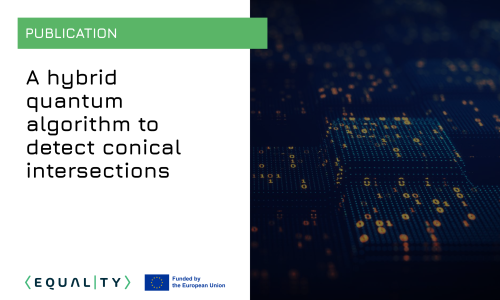

Quantum computing has long been driven by the desire to simulate interacting physical systems, such as molecules, as a novel means of investigating their properties. This is typically achieved by preparing eigenstates of molecular Hamiltonians in quantum devices which can natively store and process quantum states.
Conical intersections (CI) are degeneracy points in the Born-Oppenheimer molecular structure Hamiltonians, where two potential energy surfaces cross. They play an important role in photochemistry, as they mediate reactions which are key steps in processes such as vision or photosynthesis. Therefore, detecting the presence and resolving the properties of conical intersections is important to characterize photochemical reactions.
Nevertheless, the study of such processes requires electronic structure methods capable of accurately modelling both the shape and the relative energies of the two intersecting potential energy surfaces. This requirement poses challenges for the current available methods, but quantum computers present themselves as a highly promising option for this task.
In this work, EQUALITY partners from Leiden University, Pasqal, and collaborators propose a hybrid quantum classical algorithm to resolve the conical intersections with the help of the Berry phase. Due to its connection to the topology, such an algorithm is much more robust to errors and noise.
Read the paper by clicking on the link below. https://doi.org/10.22331/q-2024-02-20-1259
